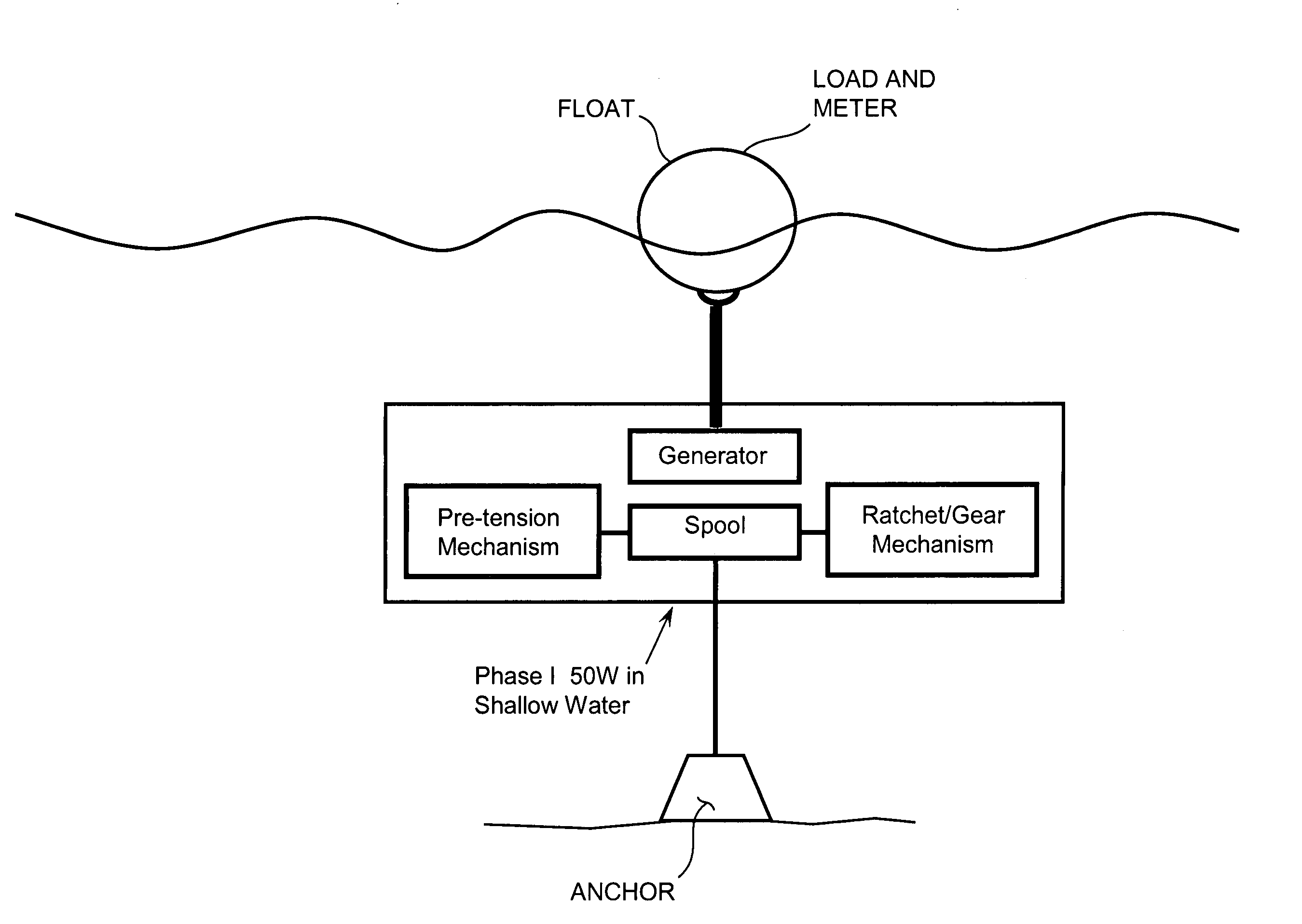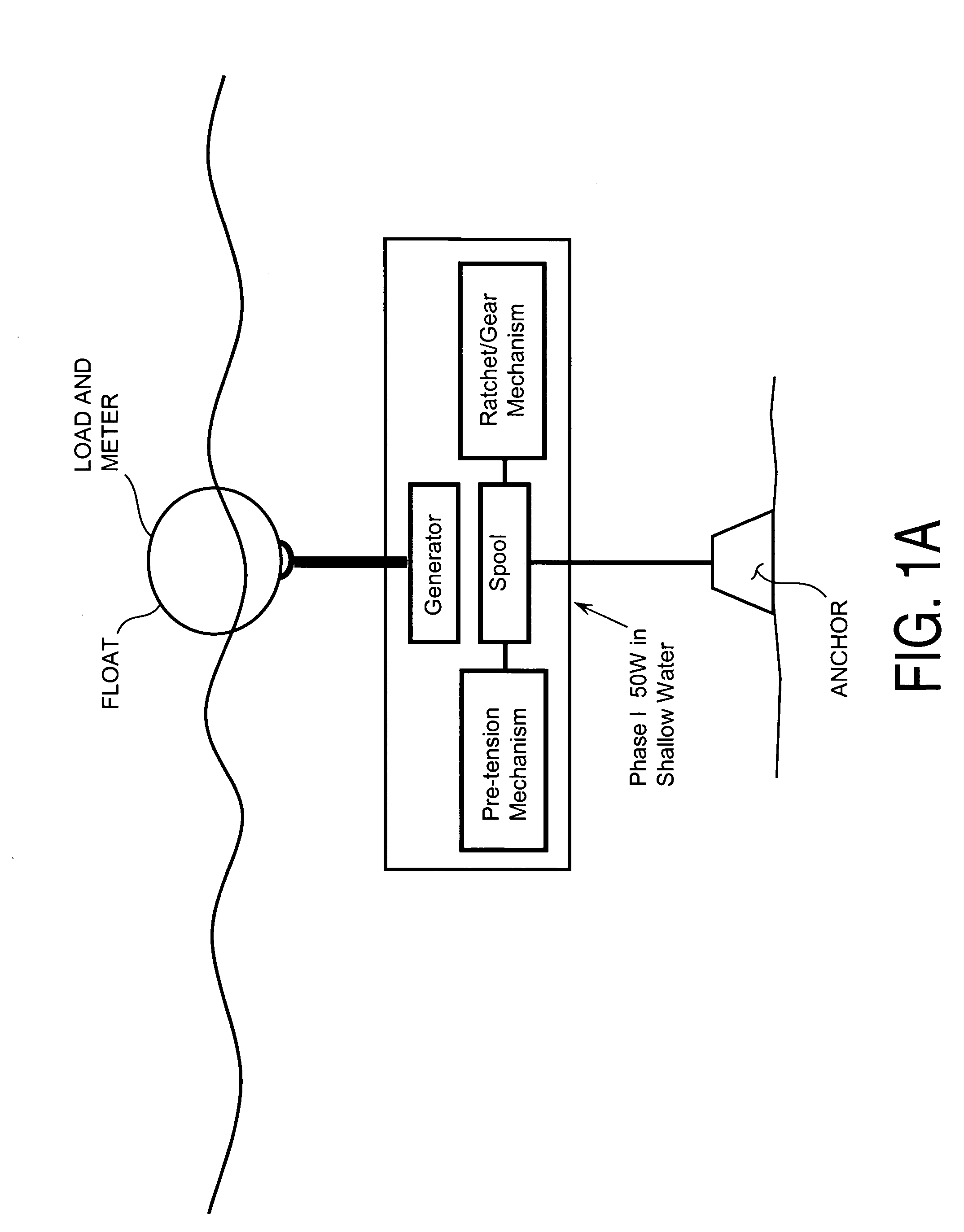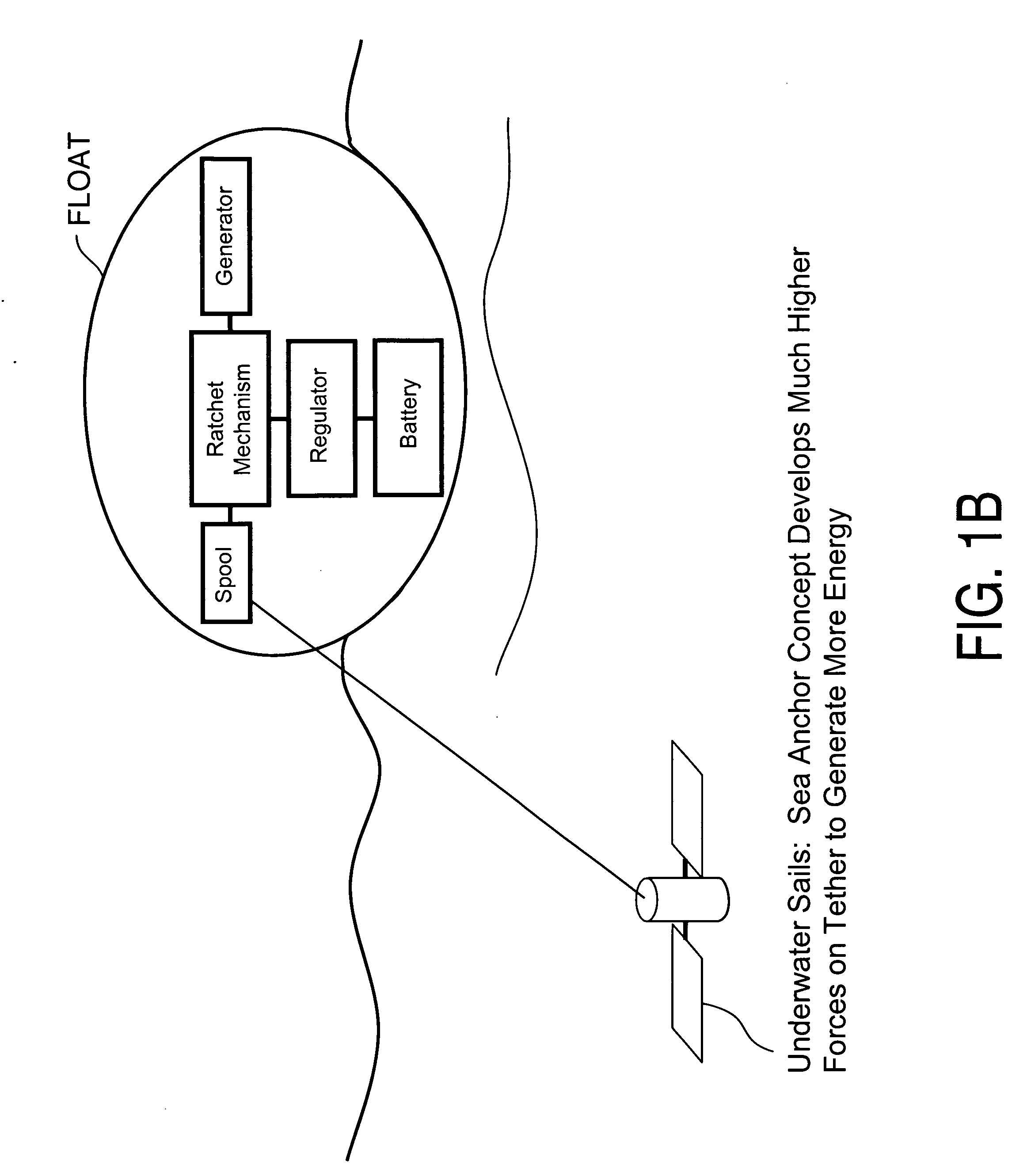Power generating buoy
a technology of power generation buoys and buoys, which is applied in the direction of electric generator control, machines/engines, mechanical equipment, etc., can solve the problems of inability to deploy densely on low-power remote sensor platforms, limited operation life of small remote buoys, and weight over 1000 kg, so as to achieve greater differential force, compactness, and light weight
- Summary
- Abstract
- Description
- Claims
- Application Information
AI Technical Summary
Benefits of technology
Problems solved by technology
Method used
Image
Examples
Embodiment Construction
[0020]Applicants have successfully designed and built a prototype compact wave energy device and successfully tested this prototype a power in excess of 50 W. This device utilizes an inflatable float at the surface tethered to either an anchor or underwater sail that allows it to generate maximum energy from a package of a given deployment size and weight.
[0021]The basic concept of the invention is a pull-cord generator coupled to surface float, preferably an inflatable surface float. Simulations developed by Applicants answer questions such as the sea state required to generate a given amount of power for this arrangement given a certain size float and set of allowable forces. The models will also help examine the anticipated sizing of the components for the ultimate full 100-200 W operation in the future.
[0022]To calculate how much energy can be generated from such an arrangement, we look at typical sea states:[0023]Sea State 3: 0.5-1.25 m Wave Height[0024]Sea state 4: 1.25-2.5 m ...
PUM
 Login to View More
Login to View More Abstract
Description
Claims
Application Information
 Login to View More
Login to View More - R&D
- Intellectual Property
- Life Sciences
- Materials
- Tech Scout
- Unparalleled Data Quality
- Higher Quality Content
- 60% Fewer Hallucinations
Browse by: Latest US Patents, China's latest patents, Technical Efficacy Thesaurus, Application Domain, Technology Topic, Popular Technical Reports.
© 2025 PatSnap. All rights reserved.Legal|Privacy policy|Modern Slavery Act Transparency Statement|Sitemap|About US| Contact US: help@patsnap.com



